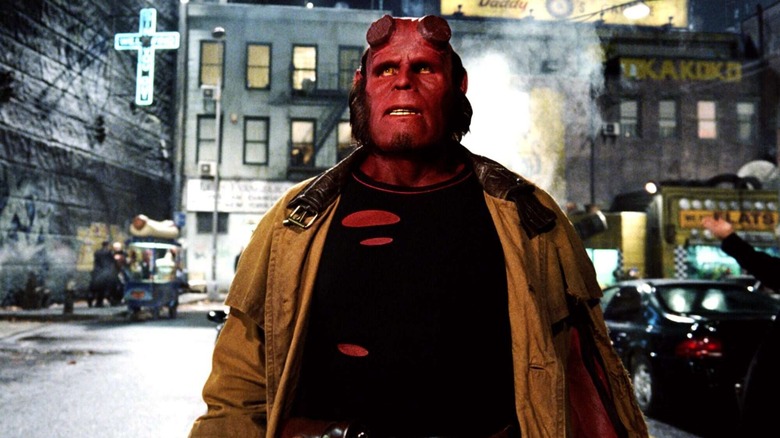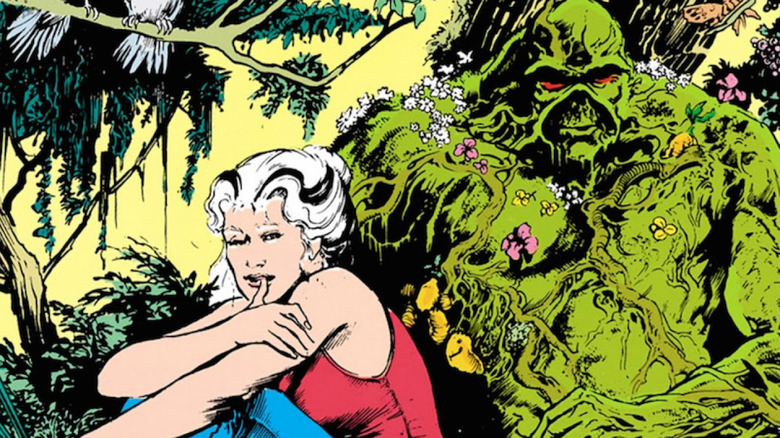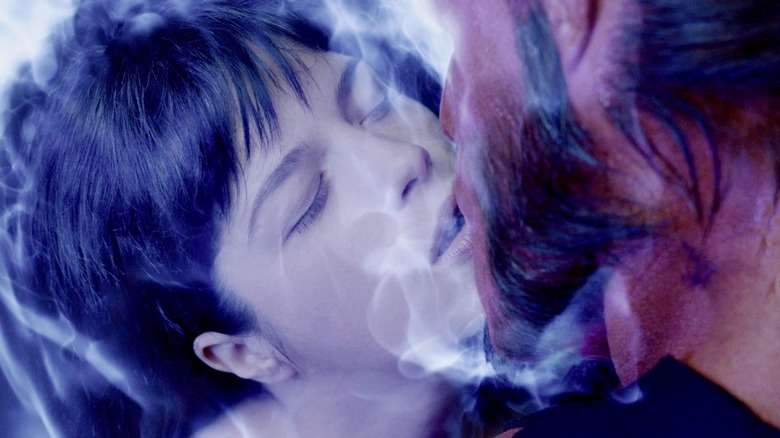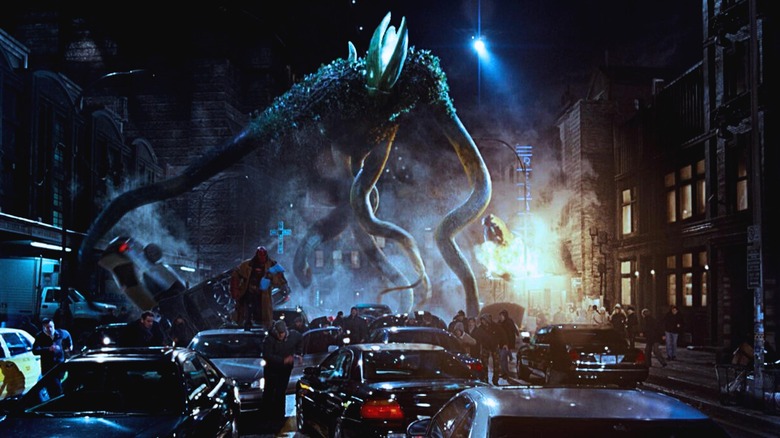Guillermo Del Toro's Hellboy II Has A Lot In Common With One Of The Greatest DC Comics Of All Time
Remember when superhero movies had heart, romance, and sincerity?
It's been 15 years since Guillermo del Toro's "Hellboy II: The Golden Army." There's a better world out there where it, not "Iron Man," set the template for superhero movies that followed. "Hellboy II" is an individualistic film. It's focused only on the characters in the present, not on spinning them off into future adventures. Del Toro doesn't assemble his film like a factory product, but uses his imagination to infuse every frame with life.
Like "Batman Returns," it's a superhero sequel where the director uses a playing-it-safe first movie as a springboard for a more personal follow-up. This is clearest in the production design — the first "Hellboy" film was about translating comic creator Mike Mignola's aesthetic into live-action. "The Golden Army," though, is all del Toro. The opening is rendered via stop-motion, an early hint of del Toro's fervor in protecting the sanctity of animation. The monster designs — from the piranha-like Tooth Fairies, the eyeless Angel of Death, and the clockwork automatons that comprise the titular army — all look like they could've come out of "Pan's Labyrinth." Naturally enough, the film has a sunny palette and warmer lighting, even at night, compared to the cool blues of the original "Hellboy."
Among 2010s and 2020s superhero movies, only James Gunn's "Guardians of the Galaxy" trilogy comes close to recapturing this magic. Looking to the past, however, there's a comic run that embodies the same spirit as "Hellboy II." What is it? Alan Moore's "The Saga of the Swamp Thing."
A romantic monster story
Created by Len Wein and Bernie Wrightson in 1971, Swamp Thing boasts a premise right out of B-movie science-fiction: scientist Alec Holland is transformed into a humanoid mound of plant matter in a lab explosion. Like a flora-themed Hulk, Holland seeks to undo his new appearance while running afoul of villains.
Alan Moore came to the title in 1984 and rebuilt it from the ground up. He revealed in his second issue, #21 aka "The Anatomy Lesson," that Swamp Thing was not Alec Holland. Rather, he was sentient plant matter created during the experiment which had taken on the late Holland's memories. With his purpose in life for naught, Swamp Thing found new meaning as the agent of the Green, the collective will of Earth's plant life.
The real thrust of the 40+ issue run is a love story between Swamp Thing and longtime supporting character Abby Arcane. Abby slowly realizes she's in love with "Alec" and, in issue #34 "Rite of Spring," questions how he could love her. "Deeply ... silently ... and for too many years," he answers. As they embrace and make love, the art turns from standard to surrealistic, enveloping the page and breaking down the panel grids along the way. The implied effect is that Abby isn't just consummating with Alec, but becoming one with the Earth itself.
Beauty and the beast
In the last leg of Moore's "Saga of the Swamp Thing," the public discovers the relationship and, considering it miscegenation, begins persecuting Abby while her husband is fighting in the astral plane. When he returns, they have to fight to reunite. Swamp Thing is soon banished from Earth and presumed dead, so he spends the last dozen or so issues traveling across the galaxy to return to his beloved — which he does in the last issue. Alec and Abby decide to live outside a society that won't accept them. Moore has a reputation as a cynic, but who knew he could be such a romantic?
I've written before about how Guillermo del Toro loves a Beauty and the Beast story; his "Hellboy" duology is the second best example of that after "The Shape of Water." The beast is Hellboy (Ron Perlman), while the beauty is pyrokinetic Liz Sherman (Selma Blair). The two were made for each other: he can withstand her fiery touch and isn't afraid of her for it. In del Toro's Beauty and the Beast — and Moore's for that matter — the Beast doesn't shed his appearance as a reward for winning Beauty's heart, for freakishness is something to be embraced.
Not everyone is so open-minded, though. After Hellboy reveals himself to the world, the people react with fear and hatred. Shaved horns or not, Hellboy does look a lot like a devil.
Moore and Del Toro
Would the world be better for our freakish heroes if the people they save were gone? Someone who thinks so is the film's villain, Prince Nuada (Luke Goss). A forest elf who's seen his people's territory shrink to human industrialization over centuries, Nuada is ready to exterminate humanity with the Golden Army.
Nuada is Mother Earth's wrath on mankind, which he takes literally by unleashing a Forest God — an enormous, tentacled plant beast — into New York. In any other superhero movie, this would only be the big CGI monster existing only for the heroes to fight and destroy. Yet del Toro gives it pathos. The Forest God is a living creature too, not inherently malicious, and the last of its kind. Hellboy does ultimately destroy it, but its death is played mournfully, not with triumph. The creature's corpse dissolves into new greenery across the cityscape, signaling new life that comes from the death of the old. The environmental themes of "Hellboy II" are the clearest link to Swamp Thing; Nuada is following the same mission as Swamp Thing but to an extreme.
James Mangold will be directing a new Swamp Thing film for the DC Universe, walking in the footsteps of Wes Craven (who made a shlocky "Swamp Thing" movie in 1982). Mangold's "Logan" is a rare superhero movie with true emotional weight, but I hope he can capture the romantic spirit of Alec Holland. If he needs a model, look no further than "Hellboy II: The Golden Army."



